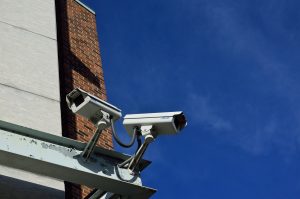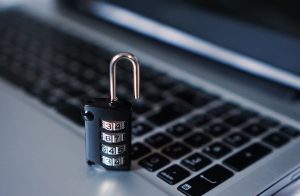How Might The Future of Remote Work Security Look?
The swift and somewhat forced adoption of remote work took many companies by surprise when the COVID-19 pandemic hit. While most businesses adapted and eventually kept on some sort of hybrid arrangement combining office time and work from home, remote work security is not as robust as it needs to be.
This article takes a look at how the future of remote work security might look if companies are to best protect their digital assets and workforces in a distributed work environment.
Remote Work Security: Future Trends
The idea of remote work is now embedded firmly in many Western working cultures. Research from February 2024 found that almost 25 percent of German workers did their jobs at least partially from home. The increasing technological complexity of the digital workplace paired with evolving cyber threats calls for looking into the future direction of remote cybersecurity and how it might evolve.
 Moving Towards More Secure Remote Work Access
Moving Towards More Secure Remote Work Access
Many companies rely heavily on VPNs and Remote Desktop Protocols (RDPs) to provide secure access to their systems and resources. While effective, these solutions can create security gaps if not properly configured and managed. A 2023 brute force campaign against Cisco VPNs to breach companies’ networks demonstrates the potential weaknesses of legacy tools like VPNs.
Remote work security will strengthen when companies move towards more secure access methods. Solutions like Secure Access Service Edge (SASE) are gaining traction as a holistic way to combine network security functions with comprehensive access management. SASE allows for secure and efficient connectivity between users and cloud services without needing to backhaul remote work traffic through the central data center for security inspection and policy enforcement before accessing cloud services.
Another aspect of this trend will see an increased movement towards zero trust architecture. The principle of “never trust, always verify” assumes that threats could be both external and internal. This architecture necessitates strict access controls and continuous verification of all users and devices accessing your resources regardless of their location.
 Need for More Advanced Endpoint Protection and Response
Need for More Advanced Endpoint Protection and Response
Whether it’s info-stealing malware, dangerous web browsing practices, or clever hacker tactics, a harsh reality about the remote work landscape is that most breaches will originate on employee-owned endpoints like personal laptops or company-provided devices. Aside from the fact that remote work blurs the lines between personal and professional device use, simply having more devices connected to your IT environment and resources expands the attack surface for hackers.
To meet these growing endpoint threats, companies will need more advanced endpoint detection and response (EDR) capabilities. Advanced threat actor techniques like fileless malware, zero-day exploits, and sophisticated ransomware call for EDR that can monitor endpoint behaviors rather than relying on signatures of known malware. Enhanced EDR systems also employ advanced analytics, machine learning, and artificial intelligence to adapt to new threats.
On the response side, automated response capabilities that can isolate infected endpoints, prevent the spread of malware, and even roll back changes made by an attack are invaluable for strengthening remote work security and minimizing the damage from attacks.
 Growth in Cloud-Native Security Solutions
Growth in Cloud-Native Security Solutions
Remote work comes with a growth in the use of cloud infrastructures with many employees relying on SaaS tools to collaborate. Cloud-native security tools will become integral to remote work cybersecurity strategies. These tools, combined with SASE’s cloud-centric approach, will provide continuous compliance monitoring, misconfiguration management, and threat detection in cloud apps and infrastructures.
For companies that develop and run their own software, cloud-native security must embrace the dynamic and distributed nature of modern cloud applications. API gateways can provide security features like rate limiting, access control, and attack detection in a world where these interfaces are how different apps and services communicate. Applying the principle of least privilege to cloud resources and services also goes a long way towards limiting the potential damage from a remote worker’s compromised user account in cloud services.
 Balancing User Experience and Remote Work Security
Balancing User Experience and Remote Work Security
While strengthening remote work security is important, it’s also vital not to neglect the balance between user experience and security. When security measures become too cumbersome or complex, employees working remotely feel frustrated and their productivity suffers. A focus on user experience with less friction, particularly with authentication is central to achieving the right balance.
Employees need quick, easy access to their tools and data to work efficiently. Leveraging context-aware security mechanisms can reduce the need for constant, intrusive authentication requests. By evaluating the context of access requests (such as the user’s location, device security posture, time of access, and typical behavior patterns), security systems can adjust the strength of authentication needed. For low-risk scenarios, access might be granted with minimal authentication. High-risk situations like financial transactions or sensitive database access would trigger additional verification steps.
 Rising Social Engineering Threats
Rising Social Engineering Threats
Threat actors perceive remote workers as inherently more vulnerable without the immediate and in-person support of colleagues or IT teams. Take a look at cyber attacks in the media related to remote work security, and a social engineering technique is often the instigating factor. As recently as January 2024, news emerged about threat groups pushing malware to employees using phishing messages on the popular Microsoft Teams collaboration platform.
With rising social engineering threats, the need for increased awareness and defense against social engineering also grows for more secure remote workforces. Training that focuses on the psychological aspects of social engineering, such as the principle of authority or urgency, will prove valuable in helping employees recognize when they’re being manipulated. Better still, run simulated phishing campaigns to test employee awareness in scenarios that mimic what they’ll face when working from home.
Strengthen Remote Work Security with DIESEC
DIESEC’s services can equip your employees with the awareness and availability to identify the many social engineering threats they’ll face when working from home. We’ll run realistic simulated phishing attacks to test awareness. Our social engineering service goes beyond phishing simulations to familiarize employees with a tailored awareness campaign.
